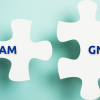
The digital transformation isn’t passing the heating industry by. Like all the other sectors, district heating is growing a collection of IT systems supporting its operations. Some of them are solutions that improve general business processes, such as ERP, CRM, or accounting systems. Another group of solutions supports processes that are typical for the industry. Some examples of such systems include SCADA, GIS, telemetry, billing, and Field Service Management (FSM) systems.
For 25, Globema has been working with network companies in the utility sector. We know all about their needs and current challenges in the market. This is reflected in our continuously expanded solution portfolio for district heating companies. Our solutions support all aspects of operations run by modern heating companies.
The systems we’re about to present are suitable for companies of any size, both small organizations with simple processes and very large ones requiring more complicated solutions.
GIS solutions for the district heating sector
With Geographic Information System (GIS) solutions, you can map your entire heating network and manage it using an IT system. Using GIS, you can complete different types of tasks related to network operations, such as transmission operations, maintenance inspections, registering and handling outages, estimating the consequences of failures, etc. Such solutions are also a great help when planning your network expansion and need to, e.g., verify its capacity.
The systems described below allow you to create an end-to-end network model, and they can be easily integrated with other systems at your company. However, they differ in terms of the model complexity and number of functions. They’re also suited for different requirements of district heating organizations.
DH.GIS, a complex GIS solution for managing district heating infrastructures
Is DH.GIS for you?
DH.GIS is the right choice for your company if…
- You own a large & vast district heating network
- You need to model your network thoroughly
- You plan to integrate with many different systems
- You’re looking for an on-premise system
Globema created the DH.GIS system based on the world’s leading GIS platform, GE Smallworld.
The most important DH.GIS functions include…
- Providing a complete heating network model
- Modeling hot water and process steam networks
- Providing topologically connected internal schemes of infrastructure objects
- Creating registers of devices located in heat generation plants, chambers, and nodes
Depending on the business needs, the basic version of DH.GIS can be expanded with several modules. Here are the most important ones:
GIS heating network model
The main module includes a complete heating network data model. It can be used to create a network asset inventory. Another use case is making a topological model of a heating network, including all network elements and their attributes. The standard object descriptions can be expanded with new attributes according to the user’s needs. The network modeling module allows you to create topologies and add attachments in any format.
Hydraulic and thermodynamic calculations
These modules perform complex calculations based on the network model. It helps to detect flows and pressure loss for end nodes in heating and water supply networks. You can visualize calculation results on a map.
The Operations module
This module supports planning maintenance activities and registering their results.
Maps – visualize precise locations of your network elements
The map module for DH.GIS supports different map services and formats (raster, vector, etc.).
Outage management and dispatcher support
These modules help analyze the impact of outages and register information related to fixing failures. They support dispatchers in managing network operations.
Transmission and plot easement
Our modules allow you to model plots and network capacity. They help create descriptions and add attributes related to the easement.
Collisions
The modules help to avoid collisions between the heating infrastructure and other types of networks.
DH.GIS can be integrated with other systems. Their data can be presented directly in DH.GIS. You can find out more about the system, particular modules, and all features on the solution’s page:
GeoGrid DH, a complete heating network model with hydraulic calculations
Is GeoGrid DH for you?
GeoGrid DH is the right choice for your company if…
- You own a small or medium heating network
- You don’t want to maintain a hardware infrastructure
- You’d like to start using a GIS solution as fast as possible
- You plan some simple integrations with other systems, e.g. a billing system
Globema’s GeoGrid DH solution can support networks of different sizes. The network model created in GeoGrid DH is less detailed than the one made with DH.GIS. However, in GeoGrid DH’s case, the implementation and data loading processes are faster.
GeoGrid DH can be easily integrated with other systems. This solution is the right choice for companies that don’t want to install and maintain the software on their servers but prefer to use it as a cloud service.

The most significant GeoGrid DH functions include…
- Building a digital network model with necessary attributes and topology
- Built-in hydraulic calculations
- Analyzing outage consequences, planning the network, managing transmission easement
- Registering network operations in the field
- Adding attachments to the network events and objects (photo documentation)
The GeoGrid DH system can be easily integrated with other systems at your company, e.g., telemetry systems. GeoGrid DH is based on our GeoGrid platform – read more about it on the solution’s page:
DH.GIS vs. GeoGrid DH
Choose DH.GIS for your company if…
- You own a large & vast district heating network
- You’re looking for an on-premise system
- You need to model your network thoroughly
- You plan to integrate with many different systems
Opt for GeoGrid DH if…
- You own a small or medium heating network
- You don’t want to maintain a hardware infrastructure
- You’d like to start using a GIS solution as fast as possible
- You plan some simple integrations with other systems, e.g. a billing system
Managing your district heating company
We already mentioned solutions that support heating network operations. Besides those, you also need tools that help manage other processes at your company and ensure their efficiency.
Without a doubt, your company collects and generates large amounts of data every day. Therefore, you should consider using a tool to standardize data, provide key insights, and inform business decisions. An example of such a solution is GeoPerformance which integrates data from different systems.
GeoPerformance – a cloud service for managing processes at district heating companies. It integrates data stored in many different systems.
Is GeoPerformance for you?
GeoPerformance is the right choice for your company if…
- You need the current statistics about the process workflows at your company
- You’d like to monitor your company operations using a single tool
This solution was created for companies that use different systems and lack an integrated environment. Such an environment is crucial, as it provides up-to-date information about all ongoing processes at the company in a clear, concise way.
GeoPerformance is perfect for companies that need up-to-date statistics but lack time to make new reports regularly.

The most important GeoPerformance’s features
The solution simplifies the decision-making process based on data. This is due to…
- Presenting up-to-date information from all or selected operation areas (network operations, investments, finances). Such data are displayed on clear charts and tables.
- Adjusting data view to each user’s needs (management board, senior staff, network experts, etc.). This helps each group make decisions related to everyday business operations.
- Easily integrating and extracting data from different systems such as telemetry, SCADA, task management, finance, investment, and others.
Collecting and digitizing data
To maintain its efficiency, your company needs access to up-to-date information. Without data, even the most advanced systems are just about useless. We created a platform that includes tools that support acquiring data about heating networks. It helps collect data in the field as well as extract them from paper documentation and digital files.
Since heating networks keep on growing and changing, your information about them must reflect reality. This is why the GlobIQ platform is made to answer this need.
Is GlobIQ for you?
GlobIQ is the right choice for your company if…
- You’re only implementing a network inventory system and need to quickly power it up with data (move them from paper documentation or different digital sources and complete an efficient inventory in the field).
- You’d like to make sure your data in an inventory system are always up-to-date.
Tools included in the GlobIQ platform help improve several processes related to loading network information to databases and inventory systems as well as maintaining data. The processes include…
Making inventory and verifying data in the field with specialized mobile apps using AI-powered image recognition and voice control mechanisms. The apps accelerate data collection, eliminate the need for creating paper documentation, and ensure improved data quality. This is because data are immediately put in the database in a structured, consistent way.
Digitizing paper documentation – our iDoc application is based on artificial intelligence and machine learning technologies. It automatically categorizes scanned documents, reads the information they contain, and moves it into the target system. Based on extracted data, iDoc can also recognize objects (e.g., technical infrastructure elements) and match them with the right attributes.
The iDoc application accelerates categorizing (recognizing) documents and filling databases with the correct information up to 10 times.
Creating a spatial document database – the LocDoc solution reads and categorizes paper documentation scans. It then creates a database of documentation assigned to a given infrastructure object. The solution uses location data included in documents related to a particular investment. Therefore it can match documentation with the right place or address. This allows you to access the documentation using a map and not only the regular search feature. You get a so-called spatial database.
Migrating data from digital sources (such as CAD projects, CSV files, and databases). Data may come from different sources and have various formats. To be put in an inventory system, they need to be standardized and transformed into one consistent format. This will ensure that your inventory system and other systems at the company can use all data. To make this process efficient, it has to be automated. What you need here is a solution for data processing and migration, such as the FME Platform. It handles over 500 data formats and is perfect for spatial data.
Find more info about the GlobIQ platform and the tools it includes here:
Managing fieldwork
The last, nevertheless important element of heating company operations is fieldwork: network inspections, maintenance, outage handling, etc. In this case, you can also use tools that organize and speed up the operations. Field Service Management systems can help you take more control over task completion, create insightful reports, and provide services to your clients faster.
GeoTask – fieldwork and field technician management
GeoTask is a solution that helps efficiently plan and manage all field tasks. The system is supported by artificial intelligence and automates work related to scheduling field employees and their tasks. GeoTask was designed so that both office dispatchers and field technicians stay in touch with one another. Field employees can use a convenient mobile app with a voice control feature to stay on top of their tasks.
GeoTask accelerates scheduling by up to 80% and increases fieldwork efficiency by as much as 40%. Streamlined communication and operations improve service quality and customer satisfaction.
Is GeoTask for you?
GeoTask is the right choice for your company if…
- Every day, you plan tasks for at least 15 field employees
- You’re searching for a way to increase your work efficiency
- You struggle to meet deadlines and Service Level Agreements (SLAs)
- You’d like to have more control over fieldwork and improve reporting
The GeoTask solution is a perfect choice for companies that complete a large number of fieldwork tasks every day (e.g., collecting data during network inspections, etc.). Data collected using GeoTask are digital, so you can ditch paper notes. It also improves data quality, as they are collected in a standardized way.

The most important GeoTask features include:
- Automated planning, scheduling, and distributing fieldwork among technicians considering requirements defined by dispatchers (e.g., deadlines, required skills, etc.)
- An ongoing registration of the work progress through the mobile app that’s available in both online and offline mode
- Organized and unified registration of task information thanks to predefined forms
- Automated creation of statistics and reports
- An option for creating photo documentation for each task
- An option for integrating with a GIS system
- An option for managing ancillary tools
Would you like to learn more about Globema’s solution for the district heating industry?
If you’re curious about how we can improve operations at your company, contact us! Our consultants will be happy to analyze your business needs and suggest a solution.












